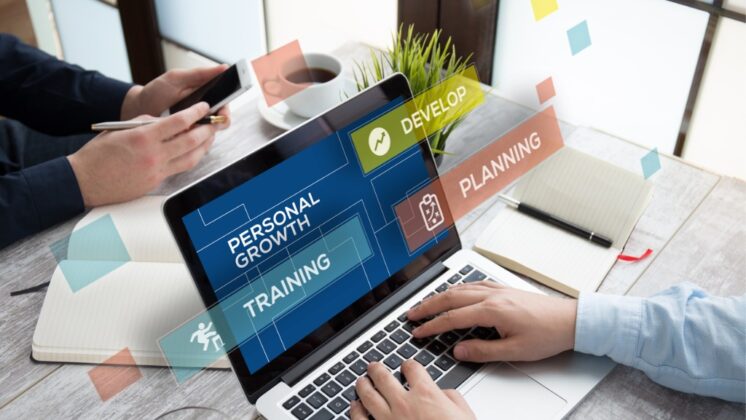Slack made headlines in late 2023 after they decided to shut down operations for an entire week to up-skill their staff. The dramatic move instigated an important discussion around company goals and employee satisfaction, as well as the transformative power that positive development goals can have on an organization.
Not everyone has easy access to e-learning service like GLOBIS Unlimited or Trailhead, of course, but that doesn’t mean your employees should be left to their own devices when continuing their education. That’s where employee development plans come into play.
What is an employee development plan?
An employee development plan is, in its most literal sense, a document that can be used to ensure your employees training and development continues throughout their career.
It’s easy to talk about the types of improvements you’d like to see, but putting in the work is much more difficult. That’s why it’s important to treat an employee development plan as an action plan. Whatever rung of the career ladder your employees are on, there’s a development plan that will suit them.
Step One: Establish a (productive) goal.
Just as no two people are the same, neither should two employee’s development plans. Maybe you’re managing someone with ADHD. Maybe a newer, younger team member needs help developing their leadership skills. Or maybe one of your all-star senior employees could use an update on the tech skills that Gen Z brings into the workforce.
It’s important to ensure these goals are career growth oriented, though. For example, an employee may ask to be set up for a critical thinking class, but you know they already excel in this department. Try to encourage your team to step out of their comfort zone and reach for a moonshot goal. Treat their professional development plan as a roadmap that will help them reach it.
Step two: Develop a (reasonable) action plan.
Take an objective look at the needs of your organization and the skill gaps that exist within your team. Will the role evolve or expand over time? Jot down these points for later.
Then, ask your employee to make their own list of skills they’d like to improve on. Try not to lead them into any one direction. This is an excellent opportunity to learn what your employee is passionate about (AKA their kokorozashi), what motivates them, and where they see themselves in the future.
Finally, sit with down with your employee and cross-reference both lists. If they seem to be way off, don’t get flustered. This is a perfect opportunity to re-align expectations and ensure you’re both on the same page moving forward.
But it’s more than likely that you’ll find at least a few areas that overlap. Pinpoint these synergies and write them down, this time together. When you’re done, you’ll have the beginnings of your new employee development plan.
When it comes to putting that plan into action, apply the 70/20/10 rule. This means that 70% of learning should come from on-the-job experiences, 20% from coworkers, and 10% from external training program or e-learning services.
It’s extremely important to make sure much of the plan can be done on the clock. If you expect your employees to work on an employee development plan in their free time, you can rest assured it’s not getting done at all. Besides, demonstrating a willingness to invest in the success of your employees will inspire your them to invest in themselves, too. And when employees invest in themselves, your organization will benefit from a stronger, more confident employee.
Next Article
How to Nurture Career Challenges for Proactive Skill Development
4 Soft Skills in the Workplace That Employers Value
7 Presentation Skills to Give You an Edge in Your Next Job Interview
Step three: Adapt and overcome.
No plan is ever perfect, and the business world continues to evolve faster than ever. A career development plan is not something you can simply set-and-forget.
Incorporating a system for self-adjustments directly is great way to account for unforeseen changes ahead of time and ensure your employee won’t feel too boxed-in.
When your employee reaches the finish line, be sure to touch base and ask the following questions:
- How many adjustments were necessary, if any?
- Why were these adjustments made?
- Did these adjustments work out for the better or worse?
- What have you learned?
- Where would you like to go from here?
Holding a candid discussion with your employee after they complete their development plan will help you understand not only how they improved, but also how you can improve as a manager, an organization, or as an individual, too.






